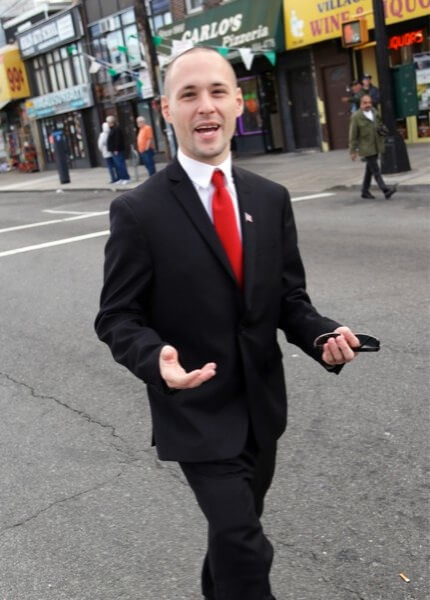By Bill Parry
State Assemblyman Brian Barnwell (D-Maspeth) has been busy since heading to Albany in January. The 30-year-old Woodside attorney, who stunned nine-term incumbent Margaret Markey in the Democratic primary before claiming her seat, has already introduced 12 pieces of legislation.
“So far in Albany we have submitted 12 bills that deal with lowering taxes, helping seniors and retirees, strengthening union protections and now we are addressing the affordable housing crisis,” he said.
Barnwell and state Sen. Michael Gianaris (D-Astoria) introduced legislation Tuesday that would require the state to calculate affordability for housing projects, such as 421-a, using the area median income from the zip code where the building is located, as opposed to the current formula which calculates affordability based on the AMI of all of New York City, Westchester, Putnam, and Rockland counties. AMI is the area median income.
“The current calculation that determines what is affordable is flawed,” Barnwell said, “so we proposed common sense legislation to change that formula.”
AMI is determined on an annual basis by the U.S. Department of Housing and Urban Development that represents the combined income of an average New York household. The number is then used to determine the amount of subsidies that a building developer can get in exchange for affordable units. However, this number often results in increasing the overall AMI for neighborhoods by grouping more affluent neighborhoods with lesser affluent neighborhoods in the same calculation, preventing new developments from truly being affordable for financially disadvanteged families.
“It shouldn’t matter what is affordable in Westchester to determine what is affordable in Queens,” Barnwell said. “This legislation will mandate that affordability be based on the zip code where the project is located. This proposal will help lifelong residents of the area to be better able to actually afford the new housing. No longer will lifelong residents be forced out due to gentrification. This proposal is a common sense solution to the affordable housing crisis.”
New York City’s population is projected to grow from 8.2 million persons in 2010 to 9 million in 2040, an increase of 783,000, or 9.5 percent, according to City Hall. The de Blasio administration has made affordable housing a top priority committed to building or preserving nearly 200,000 affordable units. It blames the housing crisis on wages that have stagnated over the last 20 years while the average monthly rent for an apartment in New York City has increased by nearly 40 percent.
“There is a noticeable lack of affordable housing for low- and moderate-income families in our city,” Gianaris said. “As rents are skyrocketing throughout our communities, we must improve policies that will allow for all individuals to attain a sustainable quality of life.”
Reach reporter Bill Parry by e-mail at bparr


































